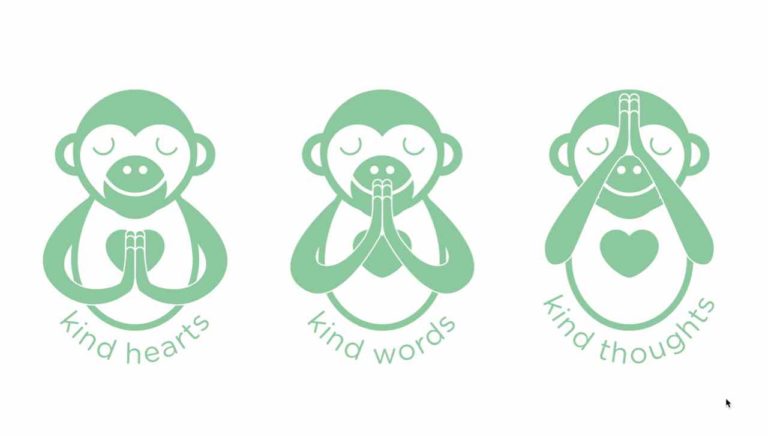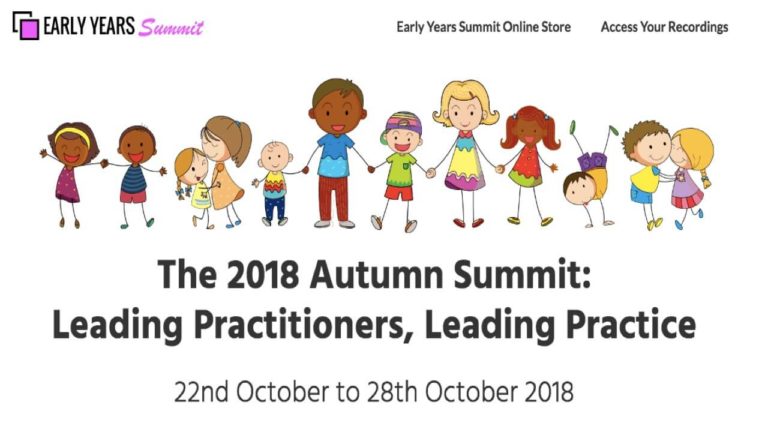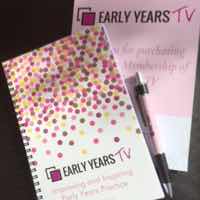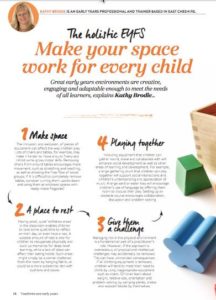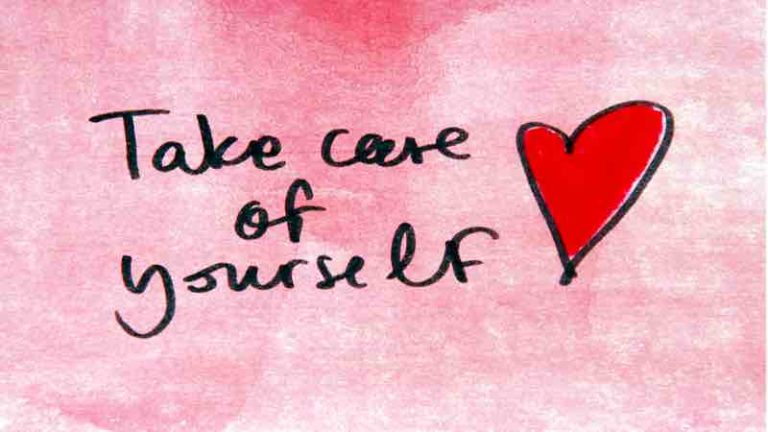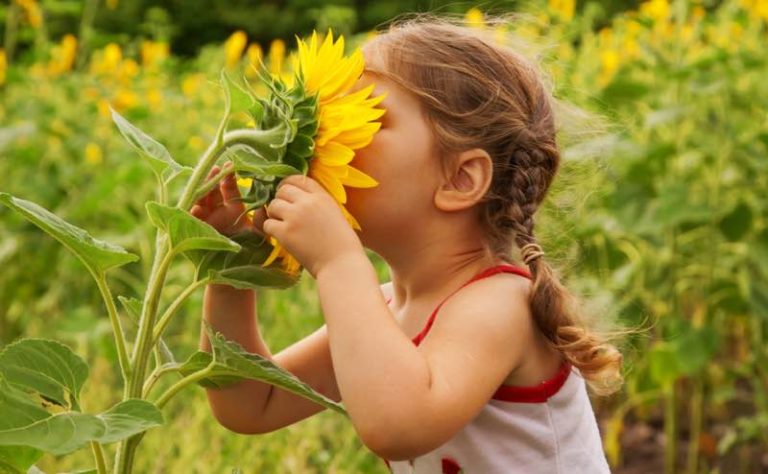Featured
Posted by Kathy Brodie on July 27, 2019.
Kathy Brodie on July 27, 2019.

I first interviewed Kim Hunter for the Summit on Leading Practitioners. At her inspirational setting, children spend their time outdoors in mixed-age groups, enjoying a beautiful natural setting.
In this interview for Early Years TV, I wanted to explore some concepts that Kim has been researching since the Summit, namely the ‘Fear and Love Spectrum’. This is the idea that children’s contemporary childhood is changing and the world that children are growing up in has the increased potential to be fearful or isolating – from Stranger Danger to excessive screen time and violent games on smartphones.
Featured
Posted by Kathy Brodie on July 20, 2019.
Kathy Brodie on July 20, 2019.

One of the things that young children need to learn as they grow up is the concept of ‘Theory of Mind’. This is understanding that other people or children will have different opinions, thoughts, experiences, beliefs, imagination and perceptions than our own. Robert Seyfarth explains a classic ‘Theory of Mind’ experiment in this Youtube video here.
By about 4 years old, children will start to realise that not everyone thinks the same way they do, or that they have the same ideas or motivations. They will be able to understand that they may be hungry, but their friend isn’t. Or that their friends all have different favourite colours.
Featured
Posted by Kathy Brodie on April 6, 2019.
Kathy Brodie on April 6, 2019.

What do you think of when someone mentions ‘risky play’?
Maybe it’s “We used to go out to play by ourselves and had to be back by tea-time”.
Or maybe you think about the rope swing in the big tree or the time you went so fast down the slope on your bike that you landed in the stinging nettles at the bottom.
All of these types of play can be considered ‘risky’. Indeed, Professor Ellen Sandseter has researched this and identified 6 different types of risky play:
- Play at height
2. Play at high speed
3. Play with dangerous tools, including ropes
4. Play near dangerous elements, such water or fire (or stinging nettles!)
5. Rough and tumble play
6. Play where you get ‘lost’ or out of adult’s sight
On the 2019 Spring Early Years Summit, I have 15 Early Years specialists and experts from around the world – including Professor Ellen Sandseter – sharing their expertise and knowledge about risky play. Everyone offers their top tips, advice and strategies for risky play, no matter where you are on the risky play spectrum.
Featured
Posted by Kathy Brodie on September 21, 2018.
Kathy Brodie on September 21, 2018.

I’m very excited to announce that the Early Years Summit has had a bit of a make-over.
The Early Years Summits are free, regular, online conferences. Twice yearly a group of experts and specialists share their knowledge, research, expertise, and enthusiasm with the world. These have had themes such as Quality Interactions; Personal, Social and Emotional Development; Physical Development; Outdoor Play and Learning.
As usual, these video interviews are available for free during the broadcast week – 22nd to 28th of October 2018.
But this Autumn Summit 2018 has something a bit extra.
You’ll still hear from leading Early Years experts from around the world, such as Alistair Bryce-Clegg, Christopher Phoenix, Professor Jan White, Rachel Buckler and Sandi Phoenix.
There’s still tons of great advice, thought-provoking discussion and lots of top tips to support your Early Years practice.
BUT – in addition to all this is a full programme of leading practitioners and educators from around the world, who are doing exceptional things for their children, from unusual environments to reflective safeguarding practices to children’s and practitioner’s wellbeing.
These outstanding practitioners and educators explain how they have implemented, grown and reflected on their own practice. They offer real-life solutions to challenges you may be having right now. You can learn about their methods and processes. Find out how they are making it better for children and get lots of support and advice to help you do the same. Of course, there are always the ‘top tips’ as well!
I’m delighted to have the experience and knowledge of both experts AND practitioners on the Summit in this unique way.
To find out more details and to sign up for the Autumn 2018 Early Years Summit, simply click below:
www.earlyyearssummit.com
Featured
Posted by Kathy Brodie on May 10, 2018.
Kathy Brodie on May 10, 2018.

I’m really pleased to be able to announce my exciting new venture: Early Years TV.
Over the last few months we’ve been beavering away behind the scenes to create what I hope will be a wonderful resource for professional development for all Early Years practitioners and educators. It’s a weekly “TV show” where I interview some of the leading experts in Early Years who share their top tips and ideas – all for free.
We cover topics like practitioner’s well-being, nurturing your staff, scheme & schema, safeguarding and workplace diversity, all the way through to leadership and management, health inequalities, news updates, and sometimes simply examples and stories to inspire you.
Each interview is posted at 6pm on Friday evening (UK time) and is available to watch completely free for a week, until the next episode is posted.
If you sign up to get updates, you will get an email to let you know which video is on now and what is coming up in the next episode. You can unsubscribe from this at any time.
 In the very near future, we’ll be offering a monthly membership, where, for a small fee, you will be able to access the previous videos from the library back catalogue as well as watch the current videos for as long as you are a member. You can buy Lifetime Membership now, which is a one-off payment for all videos, forever – and there’s a FREE Early Years TV notebook and pen for the first 100 Lifetime Members!
In the very near future, we’ll be offering a monthly membership, where, for a small fee, you will be able to access the previous videos from the library back catalogue as well as watch the current videos for as long as you are a member. You can buy Lifetime Membership now, which is a one-off payment for all videos, forever – and there’s a FREE Early Years TV notebook and pen for the first 100 Lifetime Members!
We do hope you enjoy Early Years TV, find it inspirational and useful for your practice with the children.
For more information and sign up:
https://www.earlyyears.tv/
Featured
Posted by Kathy Brodie on April 16, 2018.
Kathy Brodie on April 16, 2018.

An enabling environment is one that provides children with appropriate challenges, allows them to explore freely and has plenty of sensory stimulation. Getting the environment right for children will support their holistic development – their all-around, integrated learning and development.
 In this article, which was published in Teach Early Years, I’ve given you tips in a number of specific areas that will show you how to provide an enabling environment for your children.
In this article, which was published in Teach Early Years, I’ve given you tips in a number of specific areas that will show you how to provide an enabling environment for your children.
Click here or on the image to download the article.
You can find more about Holistic Development in my book The Holistic Care and Development of Children from Birth to Three.
Featured
Posted by Kathy Brodie on December 7, 2017.
Kathy Brodie on December 7, 2017.

Here in the UK, it is now turning cold and the first snows are falling. It’s tantalisingly close to our house – I’ve seen cars going by with snow on the roof – but so far we’ve only had frost.
I love the snow for the way that it transforms the whole landscape, deadening noise and turning the black branches of trees into sparkling sculptures.
Of course, one of the most magical moments is when children experience snow for the first time. It is worth all the time getting on hats and coats and gloves and boots just to go out to feel this strange substance floating down from the sky.
I was waiting to collect my son one day from Reception class, just as it started to snow. Without exception, every child came out of the door, looked up and stuck out their tongue to catch a snowflake. It was such an instinctive thing for the children to do!
Even if it doesn’t snow this week, there are so many wonderful things to do outdoors in the winter:
- collecting sticks, fir cones, evergreen branches
- jumping in puddles, squishing in mud and finding frozen puddles
- ‘painting’ by dripping liquid paint onto the wet paving stones and watching the paint spread and move
- having boat races in angled pieces of guttering
- spotting different berries, hips and haws on the bushes and trees
- lighting a fire and cooking over it
- looking out for bats and owls at dusk
- using strings of lights, torches and lamps to light up the area after dark
Because it gets dark so early, there are plenty more opportunities to explore light and dark indoors, for example:
- have a shadow puppet show using a sheet and backlit with a strong torch
project stars, planets or shapes onto the ceiling - create a magical land by lighting the room just with strings of lights and draped fabric
- paint using glow in the dark paints and then view the paintings with the lights off
- for the more adventurous, use a black light torch that makes colours and white gleam out in the dark
Stories such as ‘Owl Babies’ by Martin Waddell and ‘Whatever Next!’ by Jill Murphy can start conversations about being afraid of the dark and the types of adventures that can be had once the moon is out.
For older children, there are opportunities to discuss the planets and stars. In the UK at this time, you may be able to see Saturn from dusk in the Southwest sky and possibly Mercury low in the sky after sunset.
Even if it isn’t winter in your part of the world – what are your favourite winter activities?
Featured
Posted by Kathy Brodie on November 1, 2017.
Kathy Brodie on November 1, 2017.

It is now well and truly autumn in the UK.
The nights are drawing in and there is a definite chill to the air. Over the weekend I started to ‘put the garden to bed’ – clearing up the leaves, cutting back the raspberry canes and picking the last of the dahlia.
By the time I came indoors it was beginning to go dark and the solar lights had winked on.
I felt tired and ached, but also felt incredibly peaceful and calm, satisfied with a good day’s work shared with an inquisitive robin.
Coincidentally, I have had cause to think about mindfulness and calm over the last week, and how critically important this is if you are a practitioner or educator in the Early Years.
Featured
Posted by Kathy Brodie on July 28, 2017.
Kathy Brodie on July 28, 2017.

I was delighted to be able to catch up with Mine Conkbayir at the Childcare Expo in Manchester. It was the first time we had met in person, although I had previously interviewed Mine for the Spring 2017 Summit. On the Summit, Mine had explained to me how neuroscience can support children’s personal, social and emotional development.
However, in this latest interview, I wanted to examine neuroscience as a broader topic – and why we need to know about this as Early Years Practitioners. So, I was thrilled when Mine agreed to record this interview with me, where she talks about Love, self-regulation and finding out more about neuroscience.
Enjoy!
Podcast: Play in new window | Download
Subscribe:
You can also read more about this fascinating topic in Mine’s book Early Childhood and Neuroscience: Theory, Research and Implications for Practice available from Amazon here.
Some of the links that Mine mentions are:
Lighting up Young Brains: https://www.kathybrodie.com/viewpoint/lighting-young-brains/
and original report at: http://www.savethechildren.org.uk/sites/default/files/docs/Lighting_Up_Young_Brains.pdf
Neuroscience for Kids: http://faculty.washington.edu/chudler/neurok.html
You can still buy the video interview with Mine Conkbayir on the Spring 2017 Summit here: Early Years Summit Online Store



